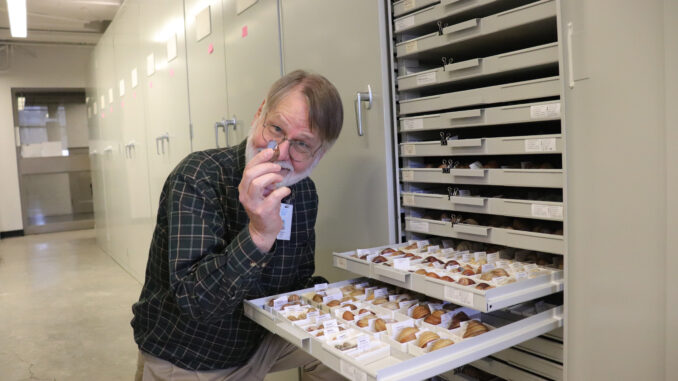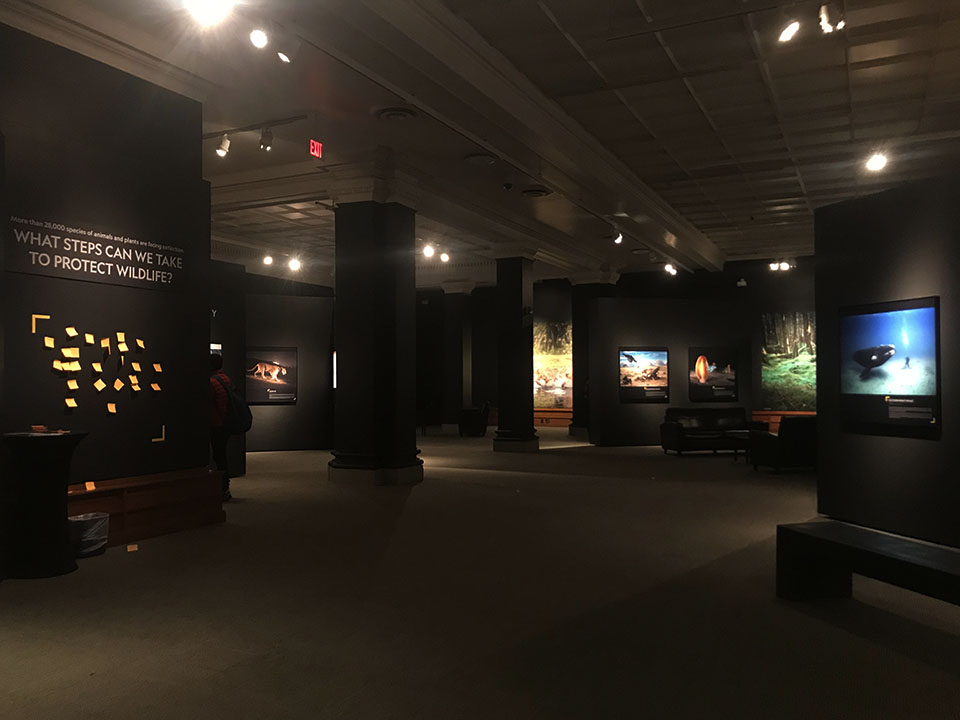
by Mary Liz Flavn | news editor
Feb. 17, 2022
With the curiosity for the natural world of Steve Irwin, creativity of Bob Ross and the loving kindness of Fred Rogers, Tim Pearce is crawling out of his shell to teach the world about mollusks.
Pearce is the head of the Section of Mollusks at the Carnegie Museum of Natural History, where he has worked for over 20 years. He continues to live his dream of cataloging various snail and mollusk species as well as conducting research on North American land snails. He considers himself to wear two hats: One as curator of collections and the other as researcher in the distribution of snails.
“Taking care of the collection is basically a library of shells. Instead of books I have 180 shells to take care of. I want to catalog them so people know they are available, and I want them to be organized so they are easy to find,” Pearce said.
A typical day consists of answering emails and writing reports. He primarily works on the lower floors of the museum where he curates shells, categorizes and studies different species. However, it is Pearce’s hope after retirement to do the fun part of conducting science and asking questions pertaining to his field of study.
Something that differentiates Pearce from other curators is that Pearce has a strong social media presence on TikTok, where he promotes the Carnegie Museum as well as tells jokes and mollusk facts to the audience.
With his notorious intro – “Hello I’m Tim Pearce from the Carnegie Museum of Natural History, and I’m here with a snail joke for you” – the audience is in for a treat.
“I love telling jokes and I’m excited it’s taken off. This underappreciated group of mollusks are now getting more appreciated. I try to slip in fun facts here and there so people are learning about mollusks. That makes me really happy,” Pearce said.
A fun fact about snails that Pearce enjoys telling others is that most snails are hermaphrodites. According to Pearce, if a snail goes to the dance they can dance with any partner and if they are looking for a restroom they can use anyone they want.
The video component of Pearce’s work began when the marketing department for the Carnegie Museum approached him with the idea of creating fun videos in which Pearce would tell a joke or a fact, and from there, it took off.
Due to Pearce’s personable TikToks, his videos have grown to be the more popular ones amongst the Carnegie Museums account.
“I don’t get to read all the comments, but I have heard they are overwhelmingly positive. An example is, ‘75% of our defense budget should go to protect Tim Pearce’ or ‘will you be my grandfather’. It’s a wonderful experience,” Pearce said.
Going back to the beginning, Pearce has been fascinated with nature and snails since the age of three. He recalled a story where when he was little, he would collect snail shells and place them in a cottage cheese carton to show others.
This perpetuated his love for mollusks all the way through college, where during his second year, he was required to write a term paper and chose the topic of land slugs. At the time, Pearce was living in the Pacific Northwest, where land slugs were abundant which allowed him to turn an assignment into a passion.
“I think I have an extra collecting gene, I love collecting things but I don’t like killing things. Like butterflies, it would be beautiful to have a wall of butterflies but you have to kill them to get the wings off,” Pearce said, “if you find an empty snail shell you can collect it and you’ve got a beautiful shell.”
A fun fact about Pearce is that his favorite snail is the land slug, specifically the smaller snails which average around an eighth of an inch or less.
For anyone looking to do something similar and follow in Pearce’s footsteps as either a curator or researcher, he recommends following your passion.
Pearce began with a passion for various mollusks and grew that passion throughout his life which brought him to where he is today. According to Pearce, if you get a job for what you enjoy doing, you never have to work a day in your life.
In addition, science as a whole was an eye-opener for Pearce in terms of fields of study that fascinated him. Setting up hypotheses and making predictions, testing said hypothesis and discovering it either worked or didn not work is all a part of the scientific process. According to Pearce you cannot prove things in science, you can only prove something false.
Pearce offers a few last words of advice that he hopes others will take into consideration.
“I think people are basically good and in doing science, there are so many people willing to collaborate with you and answer questions. So the world is full of nice people, we need to trust each other more,” Pearce said.
The next time you visit the Carnegie Museum of Natural History, scroll through TikTok or simply see a snail passing by, think of Tim Pearce, your local snail enthusiast.




